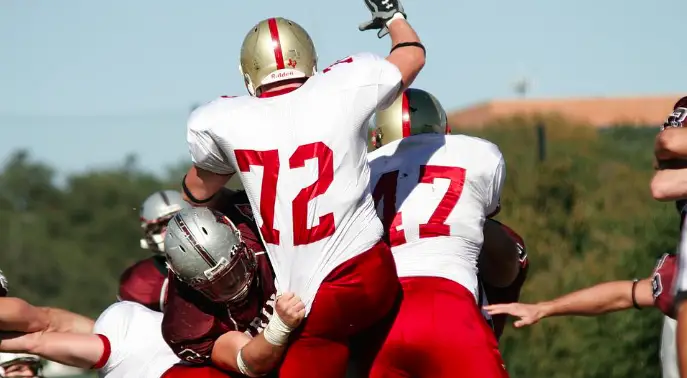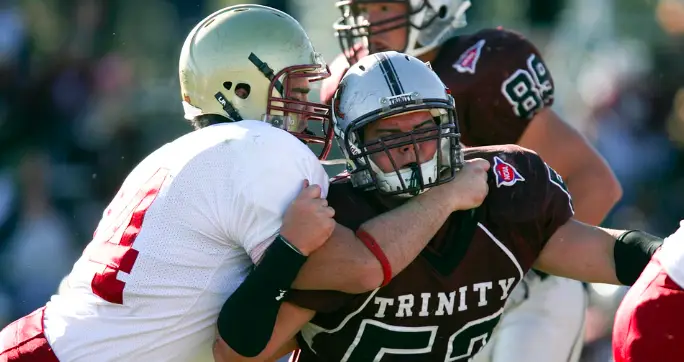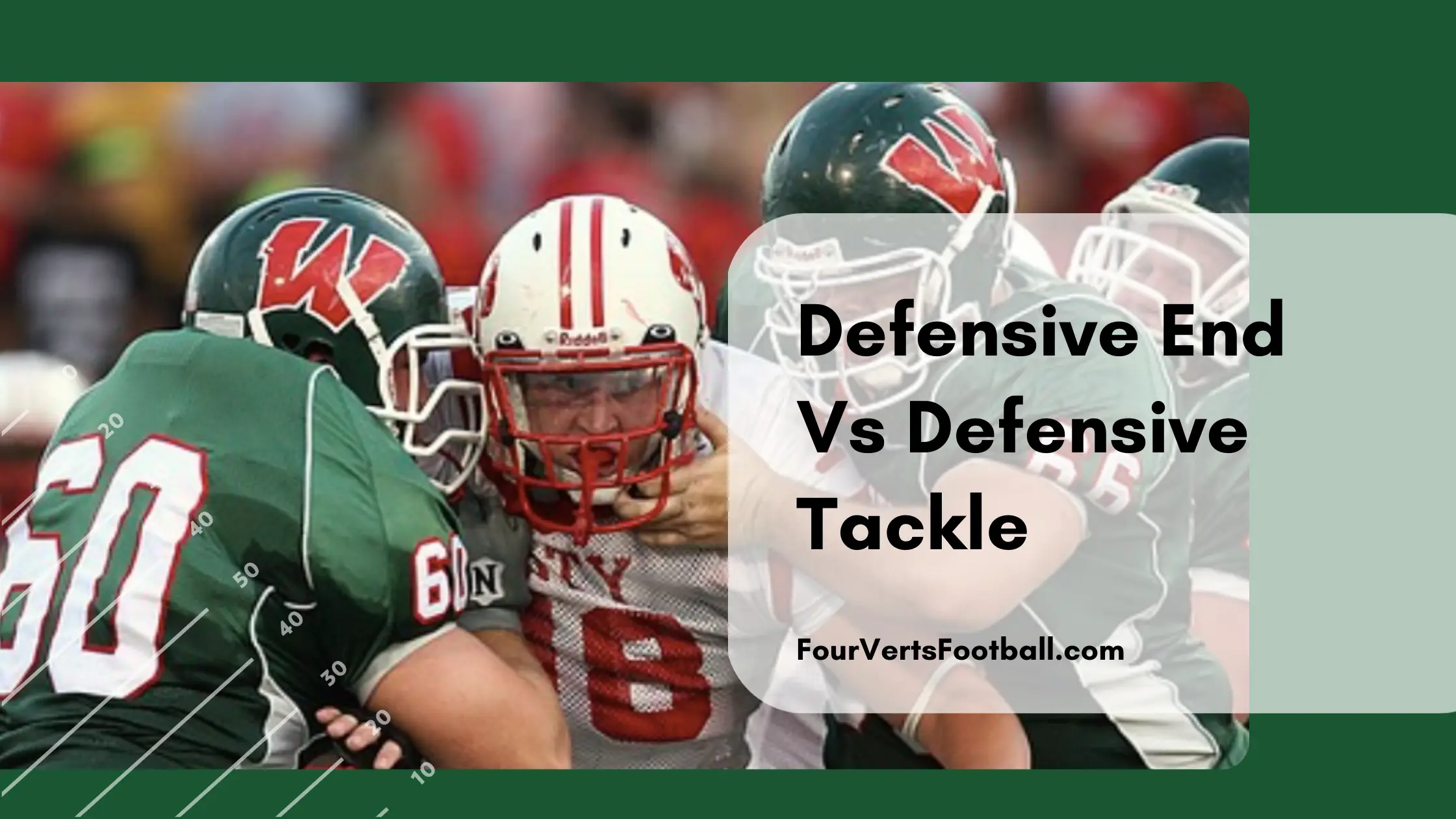When you add up all the positions between defense, offense, and special teams there is a lot to keep track of. One common question asked by fans is what is the difference between defensive ends and defensive tackles.
The major difference between defensive ends and defensive tackles is that ends have the primary focus of rushing the passer while tackles tend to be more focused on stopping the run.
Defensive ends will also line up on the ends of the defensive line while tackles will always line up in the middle of the line.
Tackles also tend to be noticeably shorter yet still heavier than most defensive ends. Both defensive ends and tackles are some of the largest positions in football.
Passing Defense

When it comes to pass defense defensive ends tend to play a much larger role. Defensive ends line up on the end of the defensive line typically matched up against the offensive tackle.
Since the defensive end is on the end of the defensive line he is going to have much more room to work with when compared to a defensive tackle.
Since these players have open space their position values pass rushing ability as the most important trait. On each passing play the defensive will try to work his way around or through the tackle in order to get to the quarterback.
Defensive ends are typically the position that ends the year with the most sacks on the quarterback.
Defensive tackles on the other hand line up in the middle of the defensive line. This means that these defensive tackles will not have much room to work with when pass rushing.
Additionally with only one or two tackles taking on two guards and a center they often have to fight their way through double teams when rushing the quarterback.
This makes it incredibly difficult for the defensive tackle to get into the backfield and tackle the quarterback. For this reason, defensive tackles tend to play a smaller role in the pass defense.
Both defensive tackles and defensive ends are part of the front seven of a football teams defense. The front seven position group includes all linebackers and players on the defensive line.
Rushing Defense

When it comes to rushing defense the defensive tackles often play the bigger role. Since defensive ends are on the end of the defensive line they are usually assigned with containing the run.
This means they will set the edge and not allow the running back to run outside them towards the sideline. In many cases, they will not tackle the running back but rather stand in the way of a path towards the sideline.
This will force the running back back towards the middle of the field where the rest of the defense will attempt to make a tackle.
The defensive tackle on the other hand is vital to keeping the running back in the backfield. On running plays a defensive tackle will look to plug holes in the offensive line.
On rushing plays the running back will have a planned gap between offensive lineman which he will attempt to run through. The defensive tackle will try and identify where that gap is and fill it up.
On some occassions they will make the tackle, on others they will force the running back to choose a new path often giving their teammates enough time to make the tackle.
If a defensive tackle is easily pushed around the offense will be able to consistently generate holes for the ball carrier to run through.
Build
The final difference between defensive ends vs defensive tackles is their stature. Defensive ends need to be strong, fast and long in order to play their positions effectively.
Their speed allows them to beat the tackle around the outside while their reach and height will allow them to grab the quarterback while they are still in the pocket.
Defensive tackles on the other and feature a very different build. DTs are the largest players on the football field and tend to have incredibly high body fat.
These players need to keep their weight up so they are not easily moved around on the defensive line.
This results in defensive tackles having beer bellies yet still being incredible athletes.
Defensive tackles also tend to be a few inches shorter than defensive ends. This is because a low center of gravity can be valuable at the defensive tackle position.

